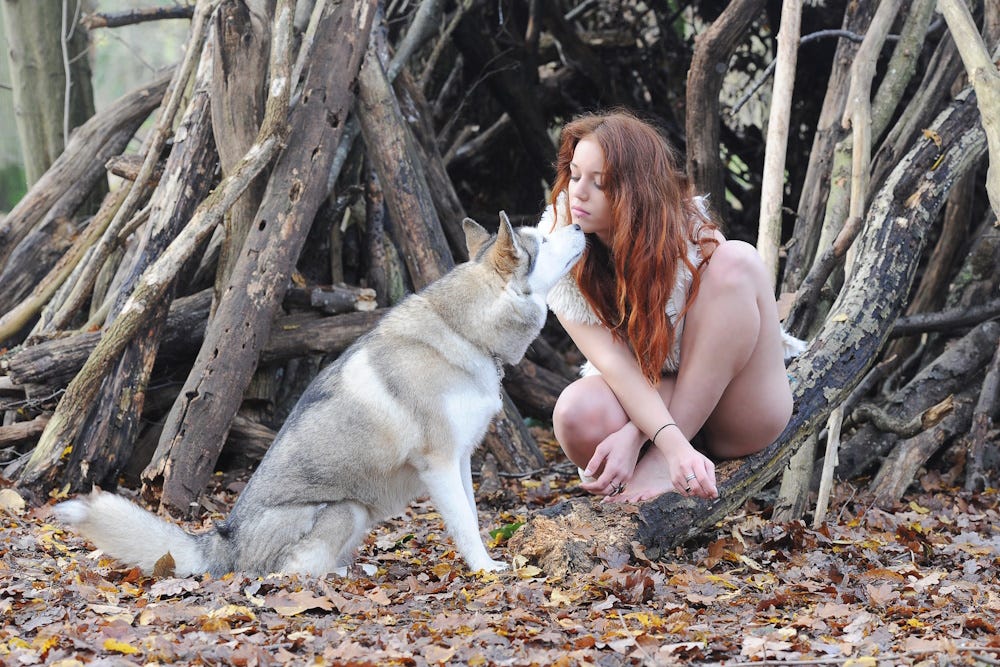Last week (okay, 2 weeks ago), I talked about Dark Artemis—the version of the archetype that hates men and ain’t quiet about it.
This week is about a friendlier version.
Before we get into the Earth Mother version of Artemis, let’s get a little background on some of this archetype’s core characteristics.
Artemis is always independent. Her development doesn’t rely on her relationships. Nor do the gifts she has to offer the world. She lives alone in the wilderness (she’s called “Far-Distant Artemis”), and when she spends time around people at all, it’s with other women. She doesn’t easily partner up.
If you want a rundown of all the versions of Artemis, check out the mega Artemis post here. A lot of the content in this post was originally shared there, but you’ll find new stuff here, too.
Earth Artemis
Dark Artemis likes her personal space because she doesn’t trust the world (ahem, men).
Earth Artemis loves her personal space because it makes it easier for her to connect with her own truth and to live in the way she likes to live.
She doesn’t like being surrounded by the opinions of others.
The way others live, their values, and the standards of society seem unnatural to her.
She holds her own value system, and spending time alone in the natural world allows her to sink deeply into her own personal truth. And in essence, to “build her own kingdom.” She’s like the girl version of Tarzan.
Earth Artemis’s kingdom might intimidate or confuse outsiders, like when people from the city venture too far into the wilderness and start to get nervous because they’re out of the regular bounds of their society, and they don’t really know this terrain. (“Are there bears here? Fuck, there are bears here, aren’t there? Oh my god, what was that noise?”)
But to Earth Artemis, her kingdom feels natural and there is a perfect order in it.
The kingdom may include unconventional relationships, work, and belief systems, but Earth Artemis tends to think she’s found the natural way of life, and the rest of the world is living outside of it, trying to force themselves into unnatural societal molds.
Earth Artemis is often a hardcore feminist.
She has a bad relationship with the patriarchy and the men who run it. It’s not that she hates men, per se (although she does have her moments), but she does not like the role that men assign her. You’ll find her at bra-burning rallies, and on the front lines of trying to effect social justice and gender equality.
She struggles to find a balance between wanting companionship and wanting her solitude. If her mate tries to make her change her way of life, he’ll be gone in an instant.
Also, she is so hell-bent focused on her own goals that there often just isn’t time for dating.
Unless a man (or woman) shares her vision and her mission in life, she doesn’t really want him cluttering up her space and her time. You could think of this as “wanting to get ahead in a man’s world,” but that’s more Athena’s realm.
Artemis is more likely to dismiss the man’s world altogether and carve her own path.
Dark Artemis does not see the harmony in the world, but Earth Artemis is starting to see it.
Her spirituality may tend toward the superstitious side, and she would never follow any religion or dogma that required her to step in line (especially a hierarchical system headed by a man!). She might become almost shamanistic in the way she believes in totems and signs—especially signs from the natural world, like spotting a hawk and deciding it was a message that she was on the right path.
With some of the archetype breakdowns, I’ve separated the archetype into “light” and “dark.” Like with Apollo, when I was talking about the Golden Son, I shared an example of protagonist Golden Son (Harvey Specter from Suits) and the antagonist version (Jordan Belfort in The Wolf of Wall Street).
But with Artemis, I’m not finding that as relevant. I’ve already categorized Dark Artemis as a whole thing.
But if you can think of dark versions of Earth Artemis (that don’t just turn into Dark Artemis), I’d love to know!
Cheryl Strayed
The character of Cheryl, from the film Wild, fits this version of the archetype.
Cheryl goes through some personal shit. She struggles with relationships, addiction, and the death of her mother. All of it leaves her feeling disempowered.
She decides to hike the Pacific Crest Trail alone. Over 1,000 miles of it.
That’s not the kind of thing society expects from a woman. It’s too dangerous, it’s too lonely, it’s too physically demanding.
But for Cheryl, it makes perfect sense.
Her journey is about taking a step back from society, expectations, and who she’s been in the past, so she can find the clarity of her own inner truth. She bathes herself in the silence of nature. Nature becomes her solace, her teacher, her guide. In nature, she finds a sense of order and purpose that contrasts with the chaos of civilization.
Not to say that nature is all sunshine. Cheryl has to fight like hell to survive. But she does survive.
She encounters other hikers on her journey, but ultimately leaves them behind. It’s not that she’s hiding from others. It’s that she’s trying to finally stop hiding from herself. Sure, it gets lonely sometimes. But she accepts that as part of her healing.
Here’s the trialer to Wild:
Other versions: Nell (from the movie Nell), Karana (the lead character from Island of the Blue Dolphins, who get stranded alone on an island and lives there alone for years), Pocahontas (the real one, not the Disney “falls in love with John Smith” one), Circe (from The Odyssey).






